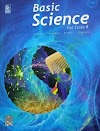Exercise
A. Answer the following in not more than 20 words.
1. What is an electrode?
2. What is an ion?
3. Mercury is a liquid that conducts electricity. What constitutes a current through it?
4. A metal is released in the electrolysis of a salt. At which electrode will it be deposited?
5. Why is an acid or an ionic salt added to water in the electrolysis of water?
B. Answer the following in not more than 40 words.
1. Why are metals good conductors of electricity?
2. What are electrolytes? Give examples.
3. What happens when a voltage is applied across electrodes placed in an electrolyte?
C. Answer the following in not more than 100 words.
1. Explain electrolysis. What happens in the electrolysis of water?
2. Write the uses of electrolysis.
3. What is electroplating? How are steel spoons plated with silver?
D. Complete the following.
1. An electrode connected to the negative terminal of a battery is called the
2. In the electrolysis of water, hydrogen is formed at the
3. In the electrolysis of potassium iodide, iodine is formed at the
4. A compound formed by ions is called an compound.
5. The electrolyte and the electrodes used in electrolysis form an
Answer
A.
1. A conductor through which electric current enters or leaves a medium.
2. An atom or molecule that has lost or gained one or more electrons and thus has a net electric charge.
3. The movement of charged particles, such as ions or electrons, constitutes a current in mercury.
4. The metal will be deposited at the cathode (negative electrode) during electrolysis.
5. Adding an acid or ionic salt to water in electrolysis provides ions that can conduct electricity and facilitate the reaction.
B.
1. Metals have free electrons that can move easily through the metal lattice, allowing for the flow of electricity.
2. Electrolytes are substances that conduct electricity when dissolved in water or molten form, such as salt or acid solutions.
3. When voltage is applied, ions in the electrolyte are attracted to the opposite electrode and either gain or lose electrons to form new compounds.
C.
1. Electrolysis is a process that uses an electric current to drive a non-spontaneous chemical reaction. In the electrolysis of water, water molecules are split into hydrogen and oxygen gases using two electrodes and an electrolyte.
2. Electrolysis is used in the production of metals, electroplating, and the manufacture of chemicals such as chlorine and sodium hydroxide.
3. Electroplating is the process of coating a metal object with a thin layer of another metal using electrolysis. To plate steel spoons with silver, a silver electrode and a steel spoon are placed in a silver nitrate electrolyte solution, and a current is passed through them.
D.
1. cathode.
2. anode.
3. cathode.
4. ionic compound.
5. electric cell.










No comments:
Post a Comment